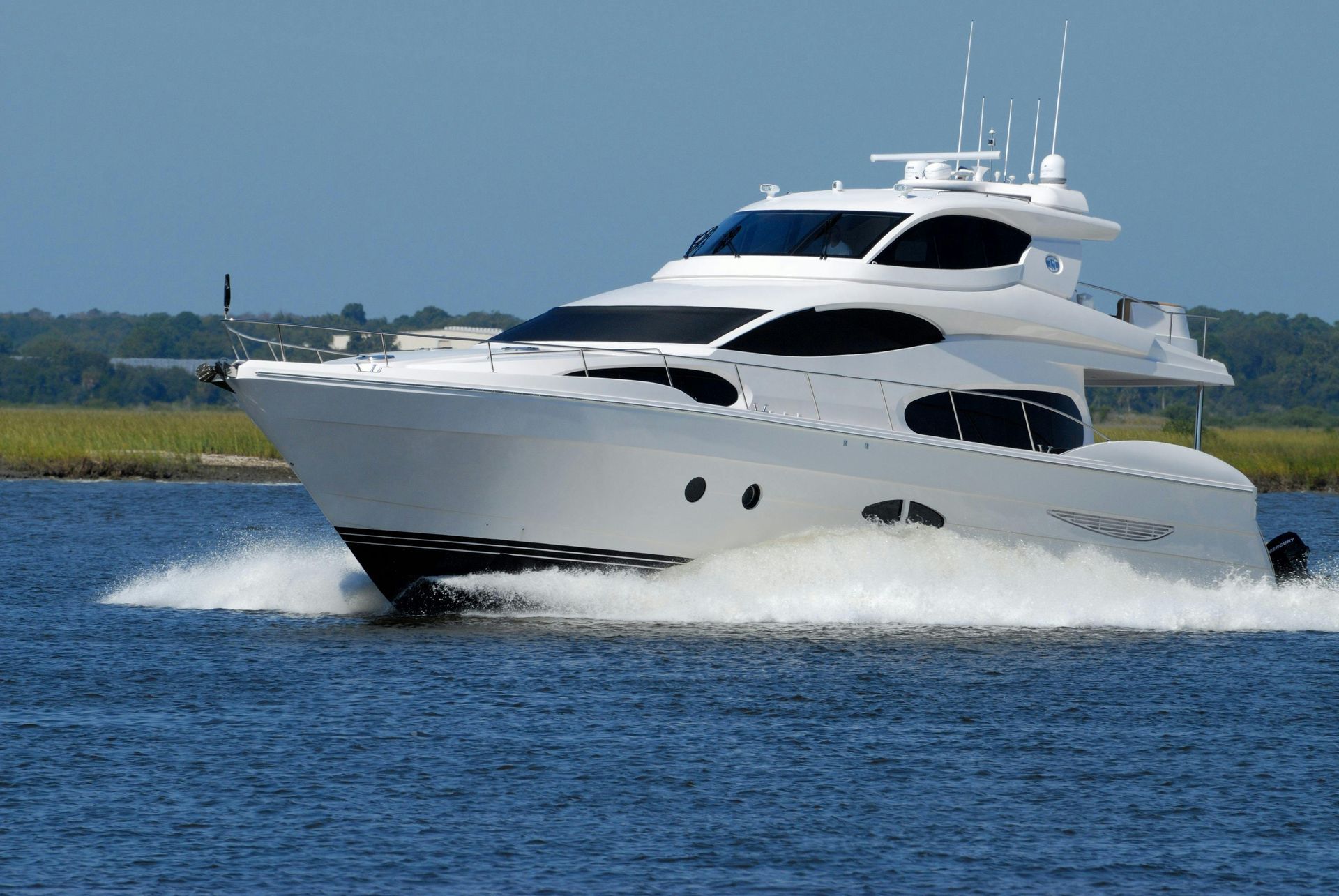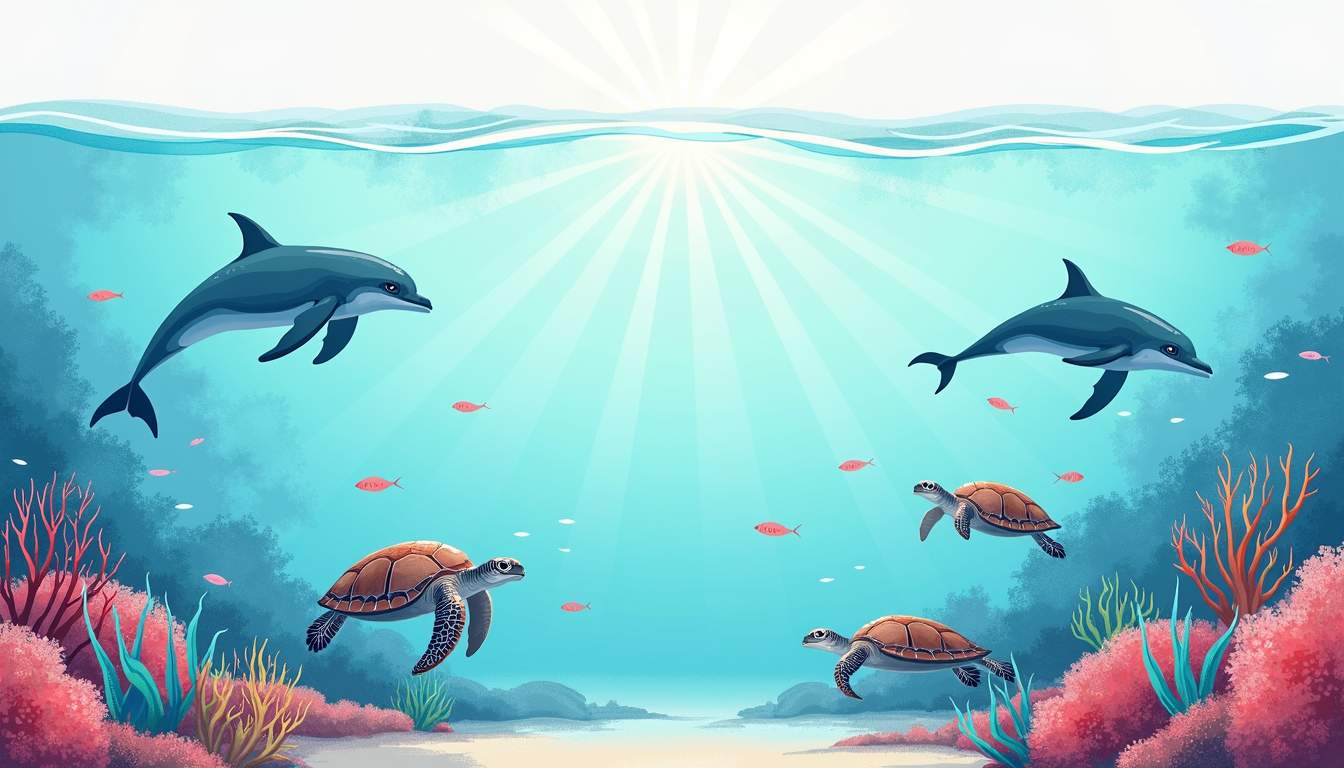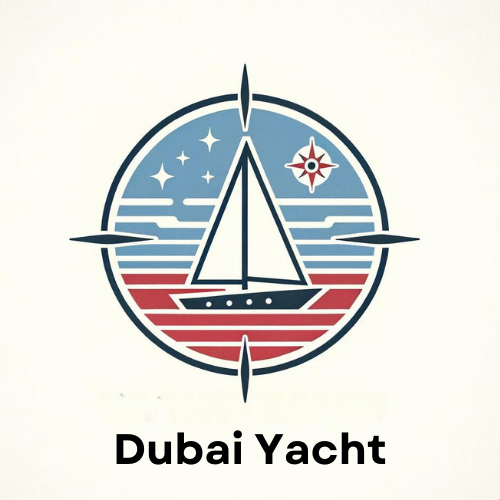
Marine Wildlife to Watch for While Yachting Around Dubai
Dubai, a captivating blend of luxurious urban life and breathtaking natural wonders, offers an enriching experience for yachters exploring its waters. The marine ecosystem around Dubai is teeming with diverse wildlife, making it a prime destination for both leisure and ecological observation. This article delves into the rich marine life you can expect to encounter, along with insights into the nature of Dubai's waters and the best practices for responsible wildlife watching.
Understanding Dubai's Marine Ecosystem
To truly appreciate the marine wildlife around Dubai, it's essential to understand the unique characteristics of its ecosystem. The waters surrounding this metropolis are part of the Arabian Gulf and exhibit a mix of tropical and subtropical marine environments. This unique blend creates a vibrant tapestry of life that is both fascinating and crucial to the health of the region's ecology.
The Importance of Biodiversity in Dubai's Waters
Biodiversity is crucial for the resilience of marine ecosystems, allowing them to thrive despite environmental changes. In Dubai, the presence of various species, including fish, corals, and invertebrates, contributes to a balanced ecosystem. The rich variety of life forms not only supports ecological stability but also provides numerous benefits to human communities, including tourism, fishing, and recreation.
This biodiversity ensures that marine life can adapt and thrive in varying conditions, supporting an intricate food web vital for sustaining numerous species. The preservation of this ecosystem is not only critical for wildlife but also enhances the beauty and appeal of yachting in Dubai. Moreover, the presence of keystone species, such as the endangered hawksbill turtle and various species of sharks, highlights the importance of conservation efforts aimed at protecting these vital marine inhabitants.
Key Features of Dubai's Marine Habitat
The marine habitat of Dubai is characterized by coral reefs, sandy seabeds, and mangrove forests. These features create a rich environment for diverse marine life. Coral reefs, in particular, are hotspots of biodiversity and serve as breeding and feeding grounds for countless species. These underwater gardens are not only visually stunning but also play a critical role in protecting shorelines from erosion and providing natural barriers against storms.
Additionally, mangroves play a vital role in filtering pollutants and providing habitats for juvenile fish and other marine organisms, further enriching the local ecosystem. These unique trees, with their complex root systems, create a nursery environment that is essential for the early development of many fish species. Understanding these features allows yachters to better appreciate the significance of the wildlife they encounter. Furthermore, the interplay between the mangroves and coral reefs highlights the interconnectedness of marine habitats, emphasizing the need for comprehensive conservation strategies that address the health of the entire ecosystem.
Identifying Marine Wildlife in Dubai
Dubai's waters are home to a plethora of marine wildlife, from vibrant fish to majestic mammals. Identifying these species can be a rewarding experience while yachting, enhancing the connection to nature.
Common Marine Species in Dubai's Waters
Many common marine species can be spotted while sailing through Dubai's coastline. Among them are various types of fish, such as snappers, groupers, and parrotfish, each displaying a range of colors and sizes. Sightings of these fish can often occur around coral reefs and artificial habitats created by local initiatives. The vibrant coral reefs not only provide shelter and breeding grounds for these fish but also contribute to the overall biodiversity of the region. The reefs are teeming with life, and a keen observer may also spot colorful anemones, sea urchins, and even the occasional octopus hiding among the rocks.
Dolphins are another frequent sighting, gracefully swimming alongside yachts and offering delightful moments for enthusiasts. These intelligent creatures often travel in pods and can be seen leaping out of the water, showcasing their playful nature. The vibrancy and diversity of marine life not only contribute to scenic views but also serve as an essential reminder of the ecosystem's health. Observing these dolphins in their natural habitat can be a profound experience, as it allows yachters to witness the intricate social structures and behaviors of these mammals.
Rare and Endangered Marine Wildlife
While common species are exciting to observe, the rare and endangered marine wildlife of Dubai should not be overlooked. Species such as the hawksbill sea turtle and the dugong are considered endangered. Spotting these creatures can be a momentous occasion for yachters, providing an opportunity to appreciate the fragility of their existence. The hawksbill sea turtle, with its beautifully patterned shell, is often seen foraging for sponges among the coral, while the dugong, a gentle herbivore, grazes on seagrass beds that are vital to the marine ecosystem.
These rare species serve as indicators of environmental health and highlight the need for conservation efforts. Being mindful of these endangered animals is paramount for fostering a sense of responsibility among yachters and ensuring their protection. Local organizations are actively working to raise awareness about these species, conducting educational programs that emphasize the importance of marine conservation. Engaging with these initiatives not only enriches the yachting experience but also empowers individuals to contribute to the preservation of Dubai's unique marine biodiversity.
Best Times to Spot Marine Wildlife
Timing can greatly enhance your wildlife watching experience while yachting in Dubai. Understanding the seasonal patterns and daily rhythms of marine life can improve your chances of making memorable observations.

Seasonal Patterns of Marine Wildlife
The region's marine wildlife exhibits distinct seasonal patterns. Generally, the cooler months, from October to April, are more favorable for spotting various species. Many fish species migrate during warmer months, while larger creatures like whale sharks may be seen during their seasonal appearances.
Choosing to yacht during these intervals not only increases the likelihood of sighting marine life but also allows for an immersive experience in the picturesque weather that Dubai offers during these seasons. During the winter months, you might also encounter playful dolphins, which are known to gather in pods, creating a lively spectacle as they leap and swim alongside your yacht. Additionally, the migratory patterns of seabirds during this time can add another layer of excitement, as birdwatchers can spot various species that stop in the region to rest and feed.
Time of Day and Wildlife Sightings
The time of day can also impact wildlife visibility. Early mornings and late afternoons are often the best times for spotting marine species, as many fish and marine mammals are most active during these hours. This phenomenon, known as the 'dawn and dusk feeding frenzy,' creates perfect opportunities for yachters to engage with the vibrant marine world.
Photographers and wildlife enthusiasts often find these hours provide the optimal lighting and circumstances to capture stunning images of the ocean's inhabitants, making it worthwhile to plan outings accordingly. In addition to the breathtaking visuals, the tranquility of the early morning or the golden glow of sunset enhances the overall experience, allowing for moments of reflection and appreciation of the natural beauty surrounding you. Moreover, the calm waters during these times often lead to clearer visibility, making it easier to spot elusive creatures such as sea turtles or even the occasional manta ray gliding gracefully beneath the surface.
Ethical Wildlife Watching Practices
While observing marine wildlife is an exhilarating experience, it is paramount to engage with it ethically. Respect for marine life and their habitat will ensure that these creatures thrive for future generations to enjoy.
Minimizing Disturbance to Marine Life
To minimize disturbance, yachters should maintain a safe distance from wildlife, especially when it comes to sensitive species such as nesting turtles or feeding dolphins. Approaching these animals without causing disruption is crucial for their well-being and ensures a sustainable relationship between humanity and nature.
It's also advisable to avoid noisy engines when in proximity to marine life. Sound pollution can disorient animals and may result in altered behaviors, which can be detrimental to their natural way of life.
Safety Measures for Yachters and Wildlife
Safety is equally important when observing marine life. Yachters should be aware of their surroundings and adhere to guidelines to ensure their own safety and that of the wildlife. Keeping a safe distance from wildlife ensures that natural behaviors are not interrupted, reducing the potential for harm to both the observer and the observed.
Additionally, educating oneself on local regulations regarding wildlife observation further enhances safe practices while yachting, ensuring that all participants contribute to a healthy marine environment.
The Impact of Climate Change on Dubai's Marine Wildlife
The effects of climate change are profound, impacting ecosystems worldwide, including those in Dubai. Understanding these changes is critical for conserving marine wildlife.
Threats to Marine Wildlife
Rising sea temperatures, ocean acidification, and rising sea levels are some of the pressing concerns that affect marine life in Dubai. Coral bleaching events, driven by elevated temperatures, have significant effects on the coral reefs that support diverse marine life.
Moreover, the increase in plastic pollution in the oceans poses a tangible threat to wildlife, particularly marine mammals and birds that may ingest or become entangled in debris. Awareness of these threats is essential for yachters to actively contribute to restoration and conservation efforts.
Conservation Efforts in Dubai's Marine Ecosystem
Fortunately, various organizations and initiatives aim to protect and restore Dubai's marine ecosystems. These efforts include marine protected areas, coral restoration projects, and educational programs aimed at raising awareness about the importance of preserving marine biodiversity.
Yachters can participate in these initiatives by volunteering or engaging in programs that promote marine conservation. By doing so, they play a critical role in sustaining the marine environment and ensuring that future generations can enjoy the mesmerizing marine wildlife of Dubai.
In conclusion, yachting around Dubai offers a mesmerizing experience filled with opportunities to observe incredible marine wildlife. Through understanding the local marine ecosystem, ethical watching practices, and recognizing the impacts of climate change, yachters can contribute meaningfully to preserving this vibrant underwater world.
Contact us for Yacht Rentals and Sales
Stay inspired
Be the first to get new yacht related content and updates. We won't spam you.
Contact Us
We will get back to you as soon as possible.
Please try again later.
